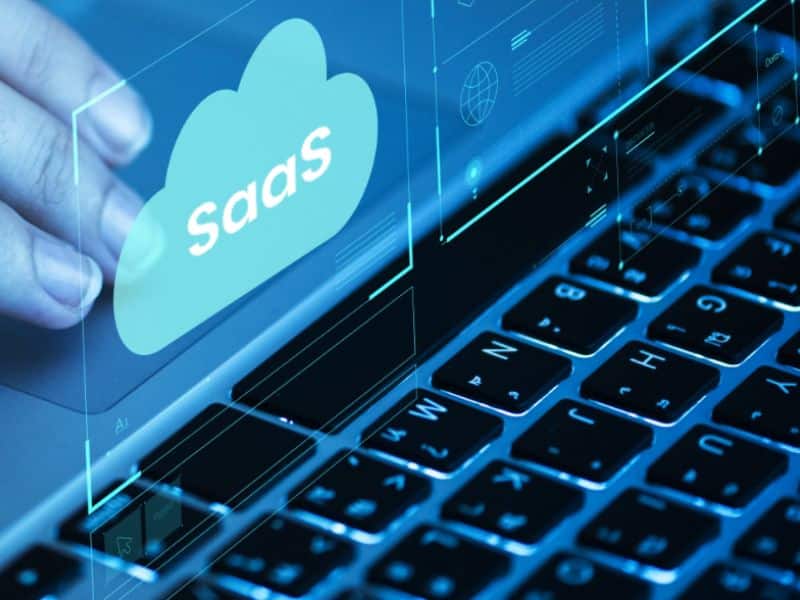Introduction
In the rapidly evolving world of software development, Software as a Service (SaaS) has emerged as a dominant model, reshaping how businesses deploy and manage applications. The rise of SaaS software development is not just a trend but a fundamental shift, offering scalable, flexible, and cost-effective solutions. However, the success of a SaaS application hinges on its scalability and performance. This blog post delves into the best practices for SaaS application development, ensuring your product not only meets but exceeds market expectations.
The development of SaaS software differs significantly from traditional software models. It requires a unique approach, focusing on continuous improvement, scalability, and customer-centric features. In this context, integrating best practices into development of SaaS software is not just beneficial; it’s essential for survival in a competitive market.
The Core Principles of SaaS Software Development
Embracing Agile Methodologies
Agile methodologies are at the heart of successful development of SaaS software. This iterative approach allows for rapid development and deployment, ensuring that the software can quickly adapt to changing market needs and customer feedback. By integrating Agile practices, developers can focus on delivering functional software in shorter cycles, leading to a more responsive and customer-focused product.
Prioritizing User Experience
In SaaS software development, the user experience (UX) is paramount. A seamless, intuitive UX can be the difference between a successful product and one that fails to gain traction. Developers must focus on creating an engaging and straightforward interface, reducing learning curves, and ensuring that the software is accessible to a diverse user base.
Advanced Analytics and Reporting Capabilities
Leveraging Data for Strategic Insights
In SaaS software development, advanced analytics and reporting capabilities are essential. They allow businesses to leverage data for strategic insights, enhancing decision-making processes. By implementing comprehensive analytics tools, SaaS software can provide valuable information on user behavior, application performance, and market trends. This data-driven approach helps in refining the product and aligning it more closely with user needs and industry demands.

Building Scalability into Your SaaS Application
Leveraging Cloud Infrastructure
Scalability is a cornerstone of SaaS software development. Leveraging cloud infrastructure is a practical approach to ensure that your application can handle increased load without compromising performance. Cloud platforms offer flexibility and scalability, allowing SaaS applications to expand resources as needed dynamically.
Microservices Architecture
Adopting a microservices architecture is another key aspect of scalability in development of SaaS software. This approach divides the application into smaller, independent services, making it easier to scale and update parts of the application without impacting the entire system.
Integrating Third-Party Services and APIs
Expanding Functionality and Reach
Integration with third-party services and APIs is a significant trend in SaaS software development. This strategy allows SaaS products to offer expanded functionality and greater flexibility by connecting with other tools and services. It enhances the user experience by providing a more comprehensive solution, and it opens up new opportunities for collaboration and innovation within the tech ecosystem.
Ensuring Robust Performance and Security
Performance Optimization
Performance optimization is critical in development of SaaS software. It’s not just about how fast the application runs but also how efficiently it uses resources. Techniques like caching, load balancing, and database optimization are essential to ensure that the application performs well under various conditions.
Security Measures
Security is a top concern in SaaS software development. Given the nature of cloud-based services and the sensitivity of data handled, implementing robust security measures is non-negotiable. This includes encryption, regular security audits, and compliance with industry standards.
Sustainable Development Practices
Focusing on Eco-Friendly and Ethical Practices
Sustainable development practices are becoming increasingly important in SaaS software development. This involves adopting eco-friendly and ethical approaches in software design and deployment. By minimizing the carbon footprint, optimizing resource usage, and ensuring ethical data practices, SaaS companies can contribute to a more sustainable future and attract environmentally conscious customers.
The Role of Continuous Integration and Deployment
Streamlining Development Processes
Continuous Integration (CI) and Continuous Deployment (CD) are vital practices in development of SaaS software. They allow for the frequent integration of code changes into a shared repository, followed by automated testing and deployment. This streamlines the development process, reduces errors, and ensures that updates are delivered swiftly and reliably.
Automating Testing and Quality Assurance
Automation in testing and quality assurance plays a significant role in SaaS software development. Automated testing frameworks can significantly reduce the time and effort required for testing, ensuring that each update maintains the highest quality standards.
Personalization and Customization Features
Tailoring Experiences to Individual Users
Personalization and customization features are key differentiators in SaaS software development. By allowing users to tailor the software to their specific needs and preferences, SaaS providers can significantly enhance user satisfaction and engagement. This includes customizable dashboards, user-specific recommendations, and adaptable workflows, which make the software more relevant and user-friendly.
The Importance of Data-Driven Decision Making
Incorporating data analytics into SaaS software development allows for informed decision-making. By analyzing user data and feedback, developers can identify trends, understand user behavior, and make strategic improvements to the software.
Proactive Maintenance and Upgrades
Ensuring Long-term Reliability and Relevance
Proactive maintenance and regular upgrades are critical for the longevity and success of SaaS applications. SaaS providers must be vigilant in identifying and addressing potential issues before they impact users. Regular updates not only fix bugs and improve performance but also introduce new features to keep the software relevant in a rapidly evolving market. This approach helps in maintaining a strong, loyal user base and ensures the software remains competitive over time.
Fostering a Collaborative Development Environment
Collaboration is key in SaaS software development. A collaborative environment encourages the sharing of ideas, fosters innovation, and leads to a more cohesive and well-rounded product.
The Need for Regular Feedback Loops
Establishing regular feedback loops with users is crucial in SaaS software development. This direct line of communication allows for the gathering of valuable insights, helping to shape the future direction of the software.
Embracing Change and Innovation
Lastly, a successful SaaS software development strategy must be open to change and innovation. The technology landscape is constantly evolving, and being adaptable is essential for staying relevant and competitive.

Conclusion
SaaS software development is a complex yet rewarding field, demanding a blend of technical expertise, customer understanding, and strategic planning. By integrating these best practices, developers can create SaaS applications that are not only scalable and high-performing but also resonate with users and stand the test of time. Remember, the success of a SaaS application lies in its ability to evolve, adapt, and continuously deliver value to its users.
What is the difference between SaaS and software development?
Software as a Service (SaaS) is a software distribution model where applications are hosted by a third-party provider and made available to customers over the internet. Software development, on the other hand, refers to the process of creating, designing, and programming software applications.
What is SaaS software development?
SaaS software development refers to the process of creating and delivering software as a service. It involves developing software applications that are centrally hosted and accessed by users over the internet. SaaS development typically focuses on building scalable, multi-tenant applications that can be easily deployed and maintained by the software provider.


